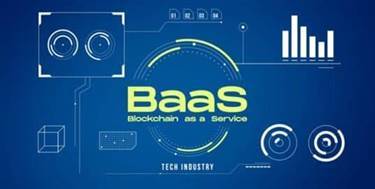Schedules that are horizontally traceable depict logical relationships between different program elements and product handoffs. Horizontally traceable schedules support the calculation of activity and milestone dates and the identification of critical and near-critical paths. You can easily use this matrix to update relationships in your project, identify orphaned requirements, and ensure Test Coverage. This video shows you how to create an Intersection RTM using the work items from your project.

Turn your Azure DevOps project into an efficient, collaborative workspace with Modern Requirements4DevOps. Create, automate, manage, analyze, and report across siloed teams from your Azure DevOps project. Based on your goal, you’ll start to collect relevant artifacts that include at least the requirements, tests, test results and issues. After you’ve collected the artifacts, you’ll want to get the most current requirements documents. Each requirement should have a unique ID number that doesn’t change, even if the requirement is reordered.
End-to-end traceability
With software projects, forward traceability is the best way of finalizing a project’s viability before presenting it to customers. For example, you might develop a test case that pertains to many requirements simultaneously; with forward traceability, you can prove to your customer that every requirement has been successfully satisfied. The team assembles project requirements when they begin development. These are two ways to generate requirements and test cases for your project. Traceability Matrices allow teams to visualize their requirements in a hierarchy, they allow teams to identify disconnected and orphaned requirements, and provide you with an an extra level of auditability. A Requirements Traceability Matrix is a tool that provides teams with the ability to easily trace requirements from end-to-end.
- Summary schedules created by rolling up the dates and durations of lower-level elements are inherently vertically integrated.
- After you’ve collected the artifacts, you’ll want to get the most current requirements documents.
- Pre-requirements traceability.[4] Requirements come from different sources, like the business person ordering the product, the marketing manager and the actual user.
- The document captures all client requirements and traces those throughout the product development.
- Some requirements might drop from the project or another test case may be added; all of these changes need to be reflected in the requirements traceability matrix.
- Ideally, the same schedule serves as the summary, intermediate, and detailed schedule by simply creating a summary view filtered on summary activities orhigher-level WBS milestones.
- Traceability software makes it easier to establish relationships between artifacts.
This could mean creating a three-pronged test that could go from requirement to requirement. The Matrix should be created at the very beginning of a project because it forms the basis of the project’s scope and incorporates the specific requirements and deliverables that will be produced. The Intersection Requirements Traceability Matrix allows you to identify and manage the relationships between the requirements in your project. In this tutorial we cover how your team can populate matrices using the results of Queries.
A framework for quality assessment of just-in-time requirements: the case of open source feature requests
It can also be used after the deployment to see why certain unused features found during user studies were required in the first place. So quite simply, requirements traceability traces relationships between requirements in a set, between business needs and corresponding requirements, and between requirements and the various deliverables of a project. This section describes basic knowledge about the increasingly-popular traceability. Traceability is the ability to trace a product’s origin, movement, and history. Other applications offer more sophisticated traceability techniques, such as allowing the analyst to create quick diagrams linking various requirements together (with arrows to show forward and backward traceability).

In both types of Matrices, you can choose what information you are bringing into the matrix. The Intersection Matrix will reflect any current relationships that exist between two work items. This matrix can also be exported to Excel and saved for auditability purposes if necessary.
Featured Partners: Project Management Software
Creating a habit of filling out your requirements traceability matrix after every test case is the key to success. ProjectManager is award-winning project management software that helps you work more productively and track that work to stay on schedule. Connect teams, departments and even outside vendors to facilitate communication and keep everyone working better together. Join teams at NASA, Siemens and Nestle who use our tool to deliver success. Avoid conflicting and outdated requirements by using comprehensive configuration settings in our requirements traceability tools to define and automatically generate traceability matrices.

Ideally, the same schedule serves as the summary, intermediate, and detailed schedule by simply creating a summary view filtered on summary activities orhigher-level WBS milestones. Summary schedules created by rolling up the dates Who is a UX Engineer and durations of lower-level elements are inherently vertically integrated. Used in software testing and product development, a requirements traceability matrix is an important tool to make sure you fulfill every user requirement.
Let Us Help Your Business
Use pre-built question lists to gather answers and turn them into robust and comprehensive requirements. By selecting the “Test Parameter” field from column options, user can see “Parameters” column in Smart Report. The options Capture user actions, Record Screen, and Record screen with audio are supported in the Test Result virtual work item. Once a user adds these attachments from ADO, they will be visible in the Smart Report/Trace Analysis section of the Test Result work item under the “Result attachment” property.
Simply add the requirements, test cases, test results (if you have them at this point) and issues to the spreadsheet. Requirements traceability ensures that each critical project requirement and the delivery of a viable product has been fulfilled. Tracking these variables over the life cycle of a project can be difficult over the product development life cycle, and having documentation solidifies that you’re not missing any vital points. Pre-requirements traceability.[4] Requirements come from different sources, like the business person ordering the product, the marketing manager and the actual user. Using requirements traceability, an implemented feature can be traced back to the person or group that wanted it during the requirements elicitation. This can be used during the development process to prioritize the requirement, determining how valuable the requirement is to a specific user.
Agile requirements engineering via paraconsistent reasoning
This allows you to pull in any subset of data, and easily visualize the relationships between these work items. Traditionally these Matrices take hours or days to create manually. In our live demos we show teams how they can build the same style of matrix in roughly 15 seconds.
In the simplest form, the test case management software consolidates several aspects of testing into one place. Neither forward traceability nor backward traceability are enough to complete a successful project. In order to develop a good product, you’ll need to use both types of traceability to your advantage. Based on the three examples above, you could assemble multiple test cases. This could mean developing a test case wherein an automated program interacts with your software as a user would, to see if your project is performing successfully. Alternatively, you could also make a test case that would target all three requirements simultaneously.
Adaptive User Feedback for IR-Based Traceability Recovery
Verification artifacts such as those generated by internal tests or formal verification tools. In order to ensure traceability to artifact types beyond requirements, RM tools often allow to import other artifacts as surrogate requirements that can then be traced with the tool’s requirements tracing methods. The disadvantage of this approach is that different adapters or converters for the different artifact types are necessary that need to have a consistent version and data format. In contrast to ALM tools this consistency must be carried out oneself.
Creatio Software: Overview – Features – Pricing
No matter how you decide to implement a requirements traceability matrix into your organization, it will likely transform your workflow for the better. RTM documents help to focus your team’s energies on the most pressing problems. They also stop you from inadvertently completing the same test cases without improving your project. Indeed, projects can be costly to develop and pursue, and your team should take advantage of any tool that promises to save time and improve your work. And one such tool, of course, is a requirements traceability matrix. For details, refer to Automotive industry in the section describing the standards, laws and regulations concerning traceability.
In this video you learn everything you need to build these matrices using simple Work Item types. Horizontal traceability is not required to statisfy bidirectional traceability.It identifies the realatinships among related items across work groups or product components for the purpose of avoiding potential conflicts. At Modern Requirements (MR), we fully understand the importance of test cases and their results.

